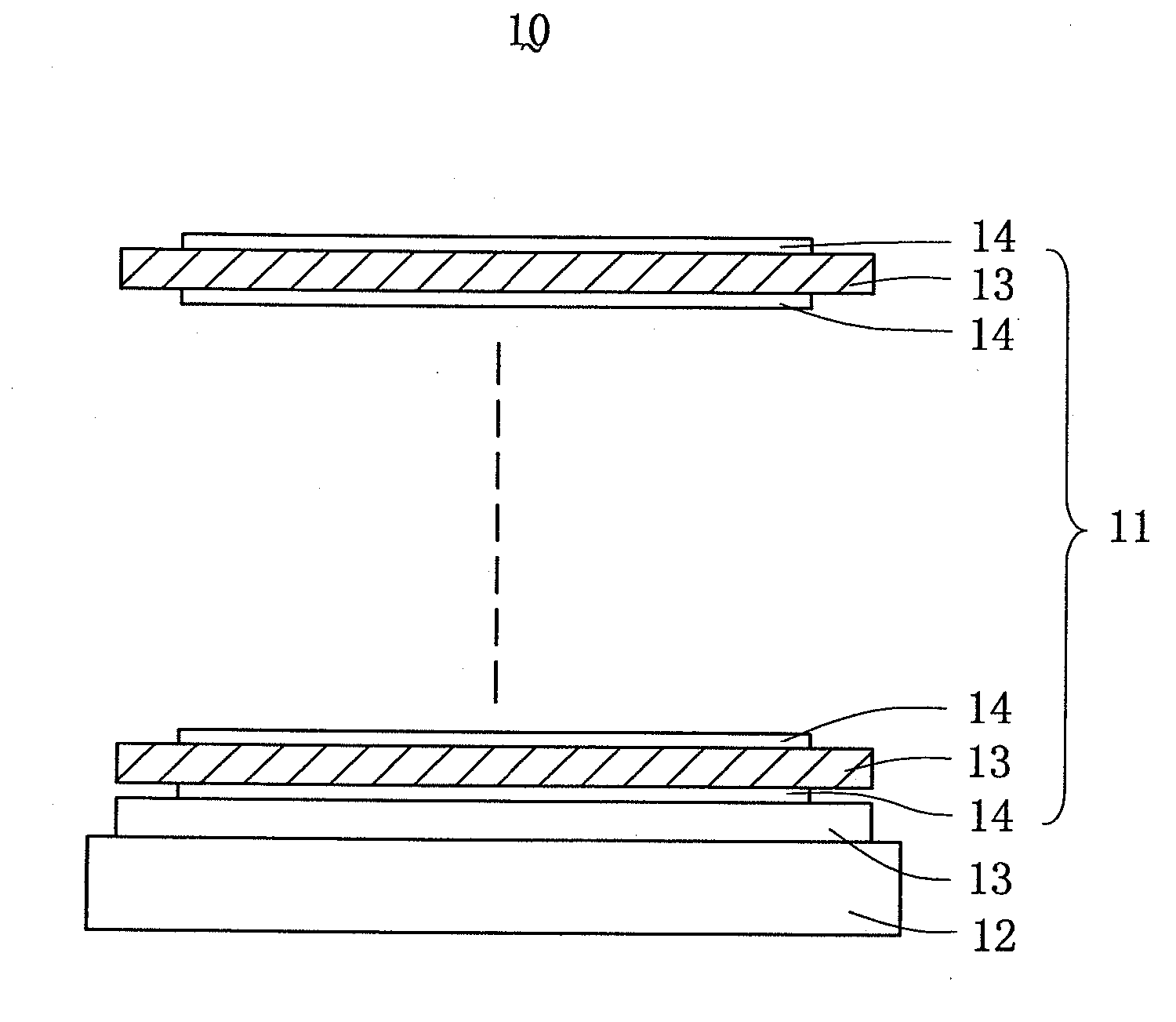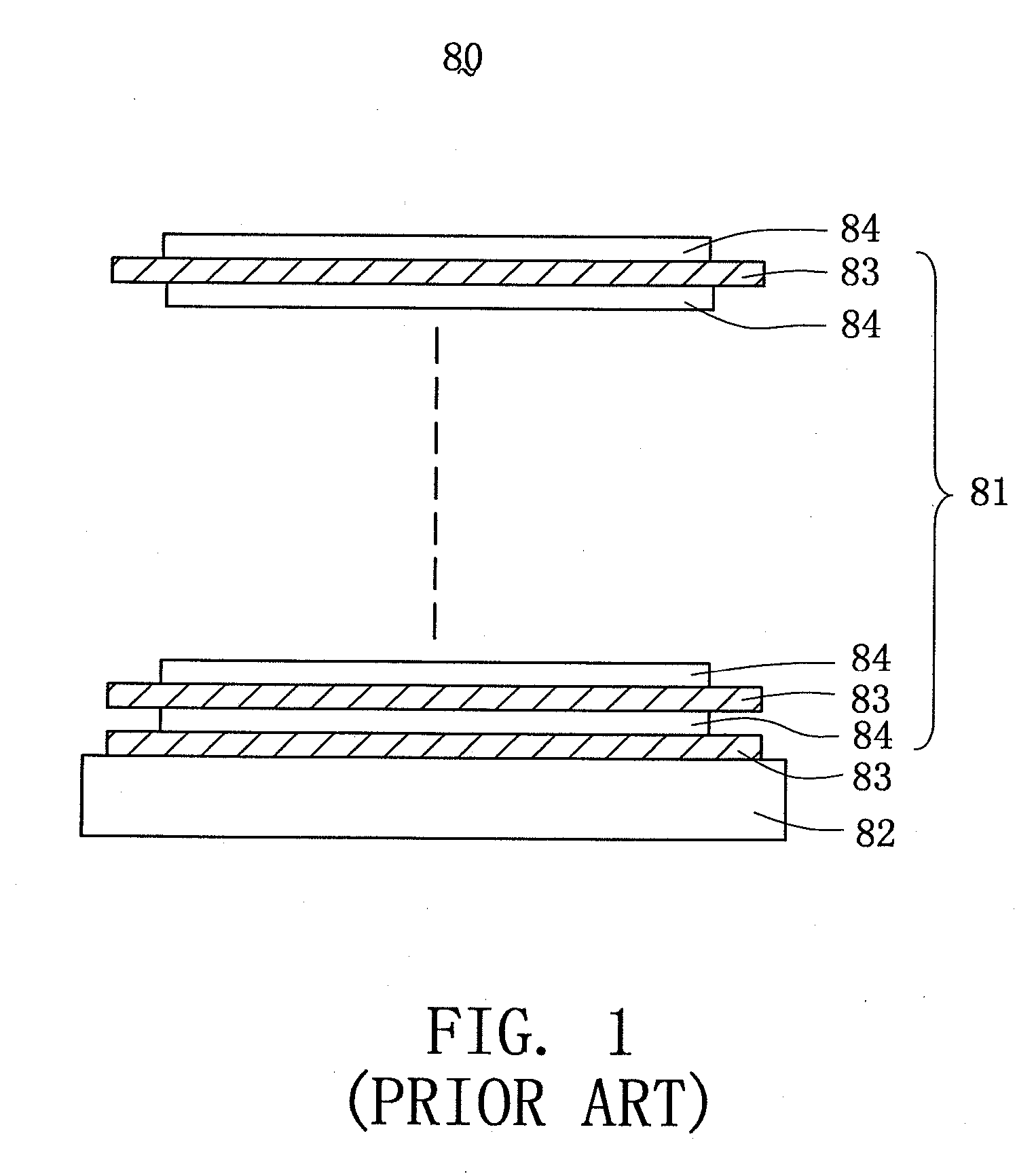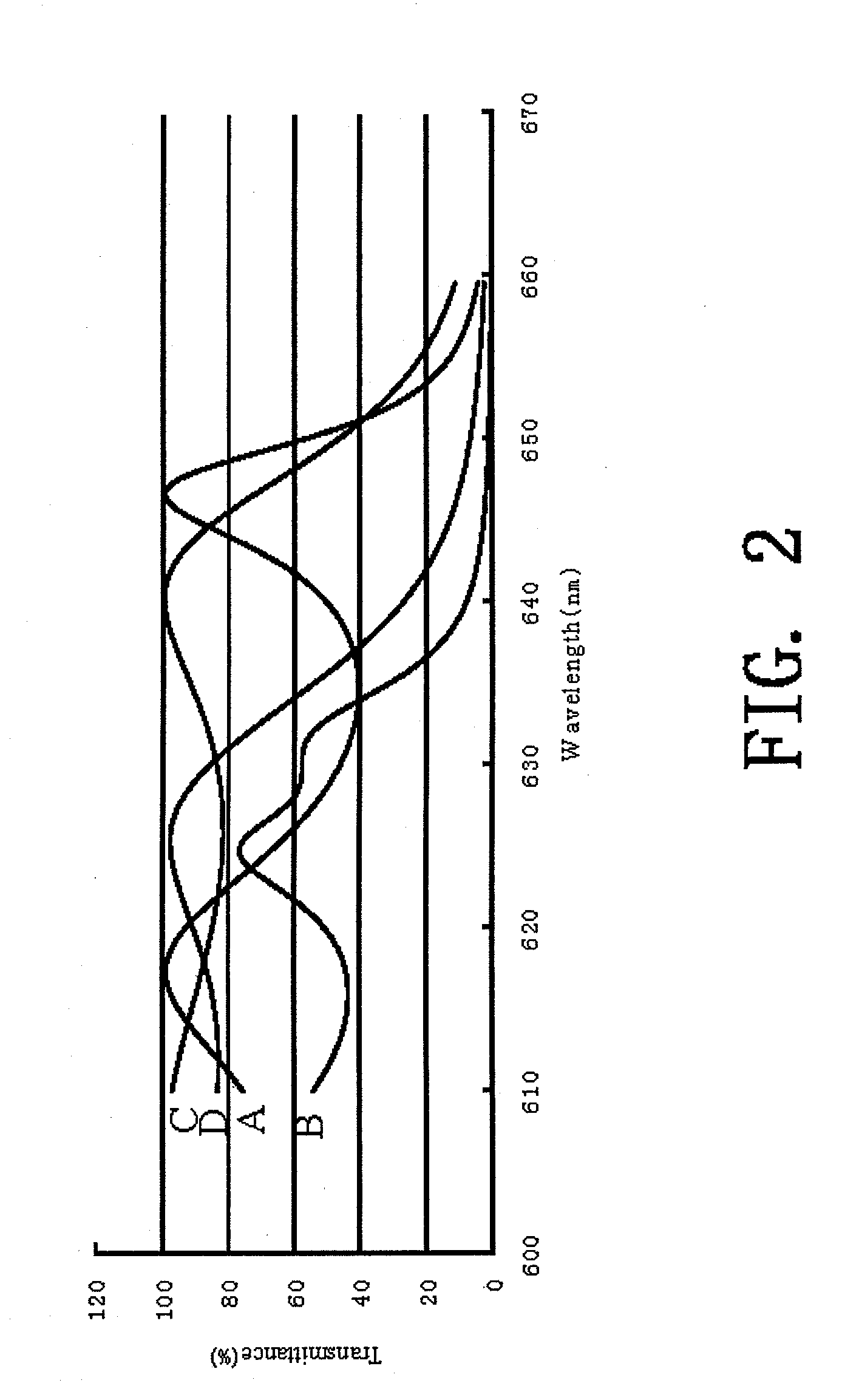Optical multilayer thin-film system
a thin-film system and optical multi-layer technology, applied in the field of thin-film systems, can solve the problems of poor monochromatic performance, large light loss, and inability to adjust the cut-off wavelength sub>c /sub>, and achieve the effect of increasing spectral reliability and uniform color distribution
- Summary
- Abstract
- Description
- Claims
- Application Information
AI Technical Summary
Benefits of technology
Problems solved by technology
Method used
Image
Examples
Embodiment Construction
[0023] In the preferred embodiment of the present invention as discussed below, an interference cut-off filter is taken as an example to introduce the present multilayer thin-film system. However, it is apparent to those having ordinary skills in the art that the present invention is also applicable to multilayer thin-film system of other optical elements, such as lenses.
[0024] Referring to FIG. 3, a multilayer thin-film system 11 in accordance with the present invention, which is use for an optical element, such as the interference cut-off filter 10, comprises a substrate 12 (BK-7), a plurality of layers 13 formed of high refractive index material, such as TiO2, and a plurality of layers 14 formed of low refractive index material, such as SiO2. The high and low refractive index layers 13, 14 are alternately laminated on the substrate 12, and are designed to have different optical thickness. The optical thickness is defined as the physical thickness “d” of the layer multiplied by t...
PUM
 Login to View More
Login to View More Abstract
Description
Claims
Application Information
 Login to View More
Login to View More - R&D
- Intellectual Property
- Life Sciences
- Materials
- Tech Scout
- Unparalleled Data Quality
- Higher Quality Content
- 60% Fewer Hallucinations
Browse by: Latest US Patents, China's latest patents, Technical Efficacy Thesaurus, Application Domain, Technology Topic, Popular Technical Reports.
© 2025 PatSnap. All rights reserved.Legal|Privacy policy|Modern Slavery Act Transparency Statement|Sitemap|About US| Contact US: help@patsnap.com



